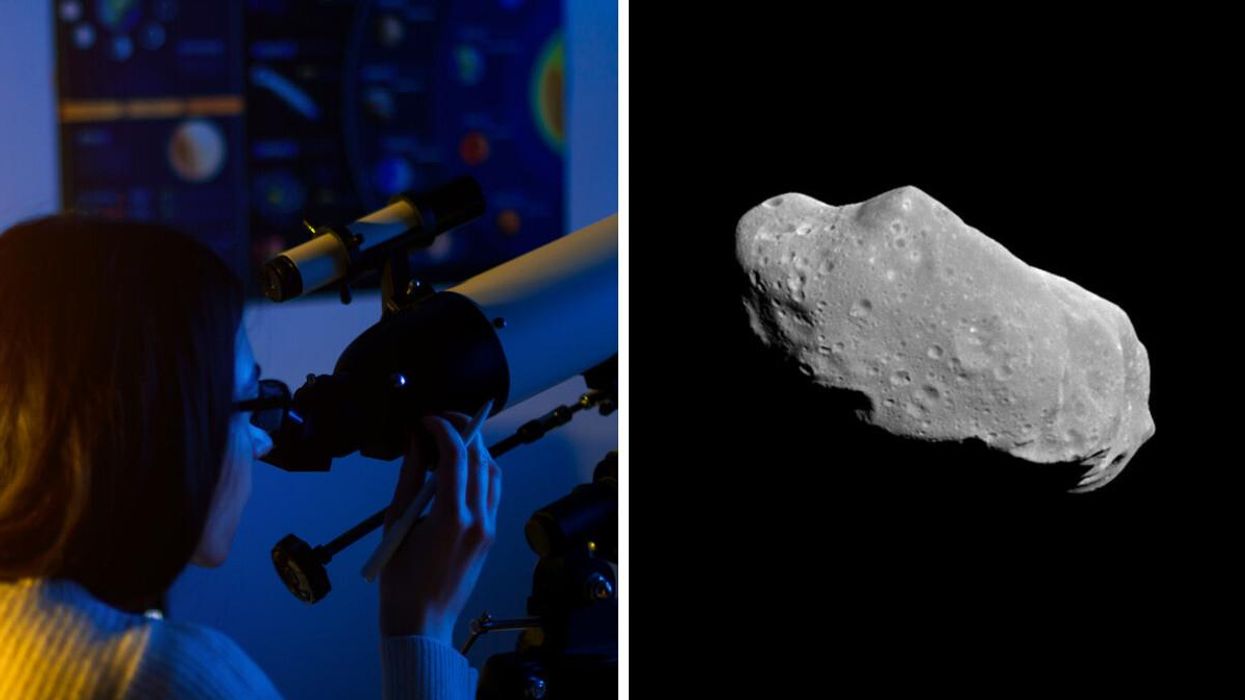A Bus-Sized Asteroid Will Pass 'Extremely Close' To Earth & They Only Just Discovered It
That's comforting.

A woman looking through a telescope. Right: An asteroid.
A speeding space rock will whip past the Earth at a distance that's much closer than the moon and most satellites, according to data from NASA's Jet Propulsion Laboratory.
But that doesn't mean it's time to hit the panic button.
An astronomer spotted the asteroid, now named 2023 BU, on Saturday and reported it to NASA, according to the space agency's list of near-Earth objects.
NASA's data shows this thing is a decent size, measuring about 3.6-8.2 metres (12-27 feet) wide, or roughly the length of a mini school bus.
It's also going to come much, much closer to the Earth than we're used to, with some experts describing it as an "extremely close" encounter. Tracking data suggests the asteroid will pass us by on Thursday at a distance of about 10,000 kilometres (6,200 miles) from the Earth's center — or 3,500 kilometres (2,200 miles) from the surface.
To put that in perspective, that's way closer to us than the average distance to the moon, which is 382,400 kilometres (237,700 miles) away. It's also much closer than the distance to geostationary satellites around the planet, which hover at about 42,300 kilometres (26,300 miles) from the Earth's center.
No one wants a bus-sized space rock to crash into their house, but according to NASA, this one isn't dangerous enough to fall into its "potentially hazardous" category.
The space agency has missed a giant asteroid or two in its time, but it generally tries to keep track of anything that's big and close enough to threaten life on Earth in a kill-the-dinosaurs sort of way.
According to the NASA definition, a potentially hazardous asteroid is anything that's more than 140 metres (460 feet) in size and passing within 7.5 million kilometres (4.6 million miles) of our orbit around the sun.
These kinds of space rocks are spotted more often than you think, although we haven't been hit by a huge one in a very long time.
You can actually look up all the objects that are passing near the Earth at a given time on NASA's website.
If you're really curious about what this asteroid would do to your house, there's an unofficial simulator you can use to test it out at this website.
But according to the simulator, an asteroid like 2023 BU wouldn't even hit the ground. Instead, it would blow up about 29 kilometres (18 miles) above the surface with the force of about 15 kilotons of TNT. That's roughly the same strength as the first-ever nuclear bomb.
But rest assured: while asteroids of this size do hit us now and then, experts say 2023 BU does not have our name on it.
This article's cover image was used for illustrative purposes only.
